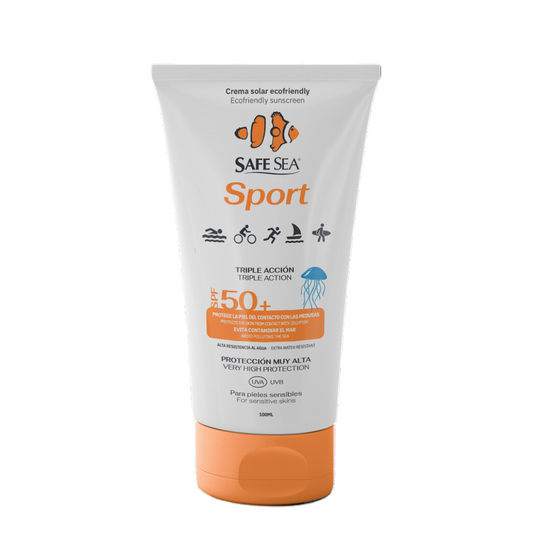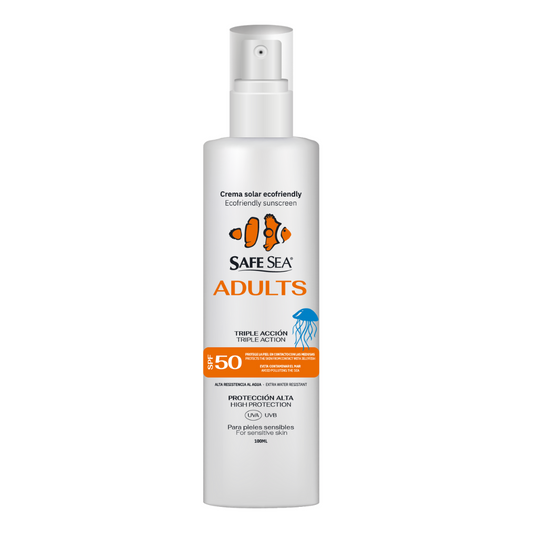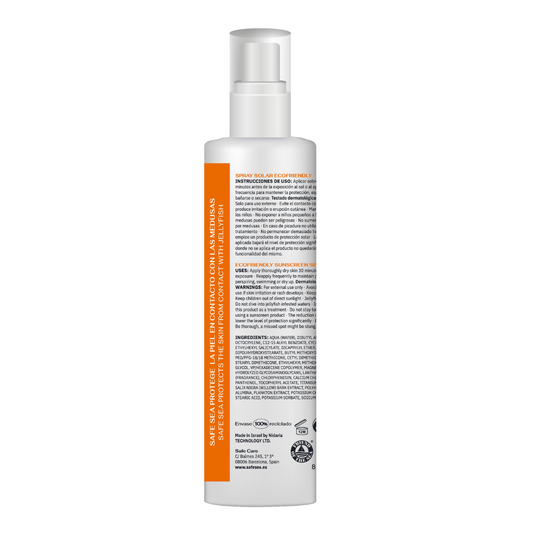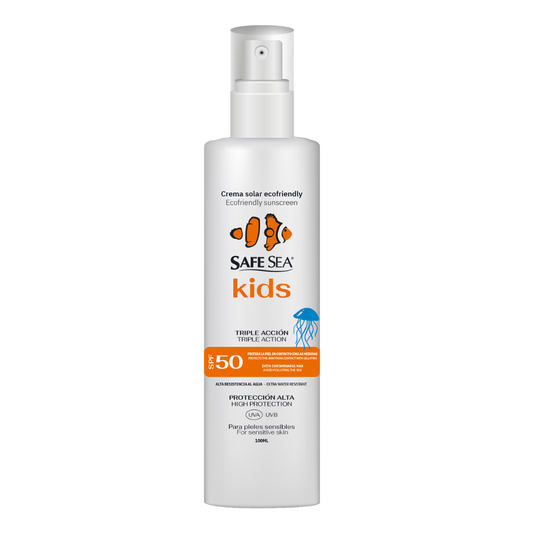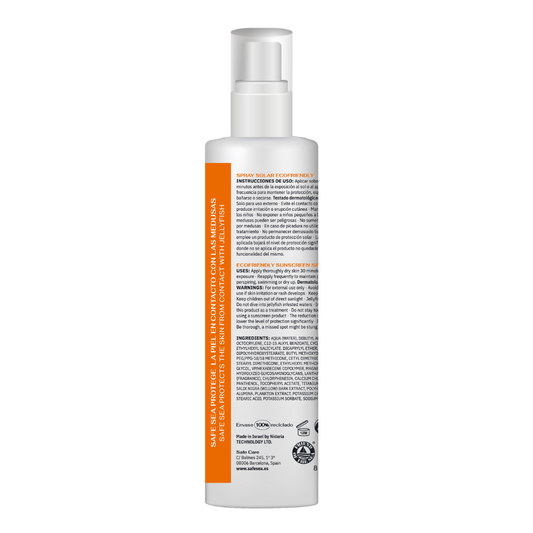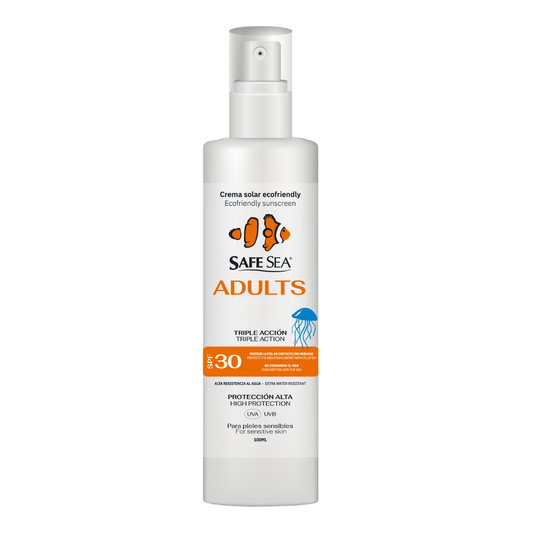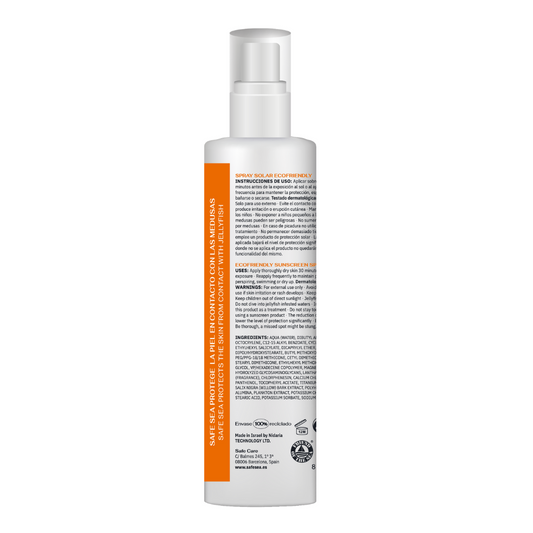Origin of the first sunscreen

It is worth noting that, throughout history, there have been many methods that people have used to protect their skin from possible sunburn (clays, ointments...). So this post is about the first sunscreen made for commercialization - discover the origin of the first sunscreen!
What is the origin of the first sunscreen?
The origin of the first sunscreen dates back to World War II. At that time, soldiers stationed in the Pacific suffered from all kinds of skin burns. They had to spend long days in the sun, which took its toll. It was in 1944, as a result of this problem, that the pharmacist Benjamin Green made a discovery that proved very useful for all these soldiers, and also for the rest of the population. He realized that kerosene - a mineral oil extracted from petroleum - had the ability to create a thin layer that, when applied to the skin, prevented the incidence of ultraviolet rays on it. This is how he said goodbye to theannoying burns , as well as the then unknown premature aging of the skin.
How and by whom was the first sunscreen marketed?
The patent for this rudimentary but effective sunscreen soon fell into the hands of one of the leading pharmaceutical companies of the time: Merck & Co. who marketed the first successful sunscreen during the early 1950s under the trade name Coppertone. Popularized by a characteristic poster of a little girl and her puppy.
Since then, the sunscreen industry has evolved considerably. These creams are not only designed to prevent sunburn, but are increasingly safe and suitable for protection against the risk of contracting the very dangerous skin cancer.
Evolution of sunscreen up to the present day
The first sunscreen has evolved over time to become an indispensable cosmetic product for both men and women. This is due to the fact that its use no longer involves an aesthetic factor but a health factor. Currently, sunscreen creams are available in the market in multiple presentations. From sunscreens in powder, cream or spray. They are even part of the composition of make-up items.
In addition, they are manufactured according to their function and area of application. In the past, a single sunscreen was equally applicable for face and body. However, nowadays, facial sunscreens are differentiated; which in most cases offer a very high protection factor and an invisible texture. On the other hand, body sunscreens are recommended.
Aesthetics is a discipline that is part of the history of the world. And the evolution of these ideas has changed over time. Although it is a branch of philosophy that studies the perception of human beings according to their sensory stimuli to beauty, this has influenced different industries and has marked the trends of what is considered beautiful or unpleasant.
Characteristics of safe sun protection
As we mentioned earlier, over the years and with the evolution of the cosmetics industry, sun protection has taken on a fundamental and indispensable role in our lives. And today, safety in skin care and protection makes more sense than ever: it is considered the best method of prevention against short- and long-term skin conditions, such as skin cancer or premature skin aging.
That said: what features should a sunscreen offer to ensure safe protection?
Broad spectrum sun protection
This is one of the main "requirements" of a good sunscreen. Its formulation must contain ingredients that act effectively against UVB, UVA and even long UVA rays.
UVB radiation is that which strikes the first layer of the skin, causing sunburn. UVA rays affect all three layers of the skin. This means a possible acceleration of premature skin aging.
High sun protection factor (SPF50 or SPF50+)
Another element that plays a crucial role in the development of safe sun protection is the choice of a suitable SPF for each type of skin phototype. We exclusively recommend the use of high protection factors for fair skin.
According to the classification developed by the dermatologist Thomas B. Fitzpatrick in 1975, there are 6 skin phototypes, which are:
Phototype 1: belonging to people with very pale skin. Generally occurs in people with red hair and/or skin that almost always burns. They hardly tan and often suffer photoallergic reactions when exposed to sunlight for hours.
Phototype 2: people with white, sensitive and delicate skin. Generally occurs in people with blond or light hair. As in people with phototype 1, this skin type hardly tans and suffers photoallergic reactions upon prolonged exposure to the sun.
Phototype 3: is the most common skin phototype among Spaniards. It corresponds to people with brown hair and intermediate skins. When exposed to the sun, they first redden and then tan.
Phototype 4: belongs to people with dark or black hair. The skin is dark and tans quickly.
Phototype 5: people whose skin is even darker than that of phototype 4.
Phototype 6: people with very dark skin. Traditionally referred to as "black skin".

Water-, sweat- and sand-resistant formula
There are various external agents that can directly interfere with the effectiveness of a sunscreen. Popularly, the adverse action of water, sweat and sand is differentiated. During the time we are exposed to the sun, it is very likely that at some point one or other of these factors will hinder the protective effect of the cream.
For this reason, the use of a sunscreen that is resistant to water, sweat and sand is highly recommended.
Sunscreen without animal-derived and organic ingredients
That's right: this is one of the clearest trends supported by today's market. The development of cosmetic products without ingredients of animal origin. This preference also seems to go hand in hand with the choice of anocean-friendly sunscreen . It is essential to use a sunscreen that respects the fauna and flora of the sea. In addition to preserving the coral reef. As is the case with our Safe Sea sunscreens: unlike other sunscreens, they do not dilute in water. After prolonged underwater activity (80 minutes), it keeps more than 95% of its formula adhered to the skin.


